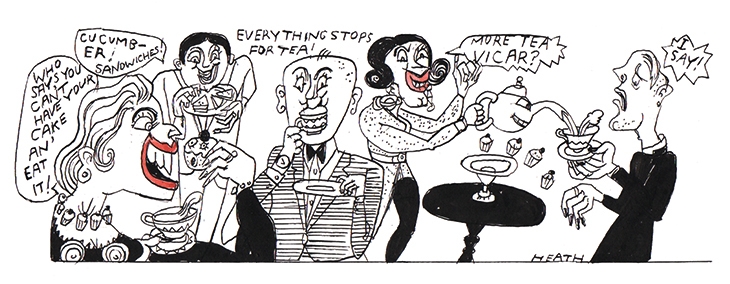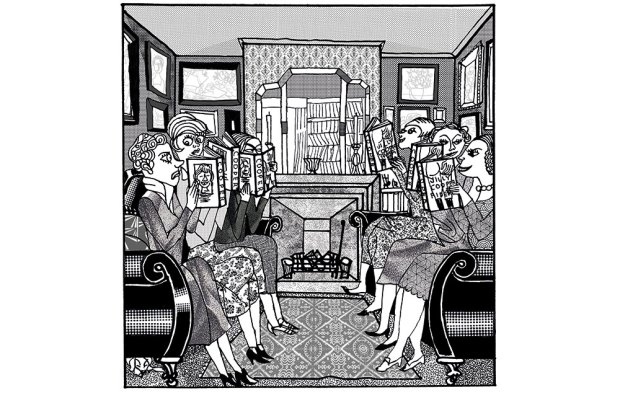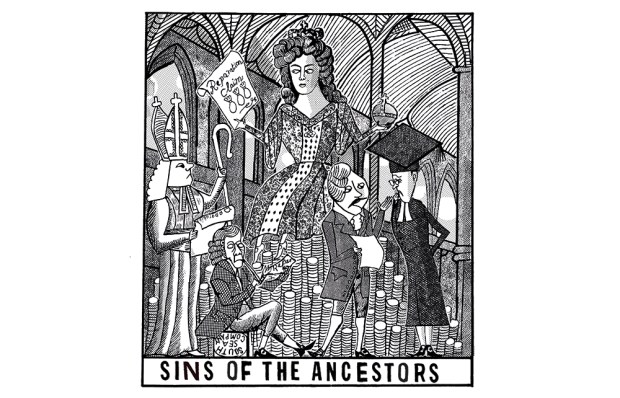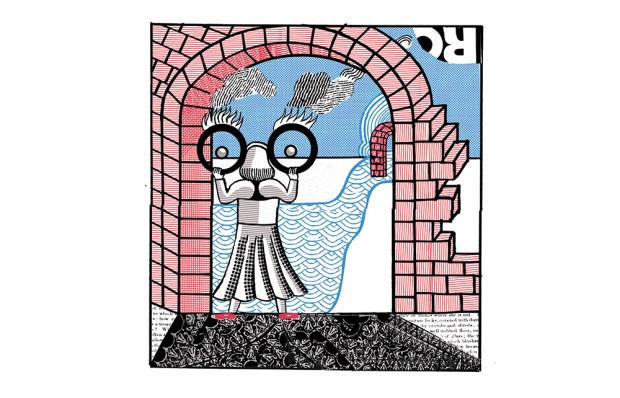The other day, I came across a description of afternoon tea written by Alfred Douglas in 1920: ‘Two kinds of bread and butter, white and brown, cucumber and tomato sandwiches, cut razor thin, scones, rock buns and then all the cakes — plum, madeira, caraway seed — the meal had about it the lavishness of a Victorian dinner.’
There are a few things about this feast which I find striking. It includes two kinds of bread and butter. Sliced bread and butter never features on the modern table but a century ago, people used it to fill themselves up; it took the edge off your appetite. Note also the simplicity of the cucumber and tomato sandwiches. Both are excellent if they’re made from good stuff. The crucial thing was that they were cut thin. Scones survive today but rock buns are rarities. Big cakes like madeira and caraway seed were essentially plain cakes, madeira being a simple butter sponge, and caraways the crucial element of seed cake — a vanished taste. Plum cake was rich fruit cake.
That was afternoon tea a century ago. There were of course variants — watercress sandwiches maybe — but in this impressive assembly what was interesting was how the essentials were simple, designed to fill you up as cheaply as possible. As a meal, afternoon tea used to be the cheap way to eat somewhere swanky.
It has had something of a renaissance in recent years. Today, you’ll find afternoon tea in any grand establishment that wants to show off its traditional credentials. It’s changed utterly, though.
I’ve just been to tea at the Connaught, and the menu was extraordinarily elaborate. After the excellent sandwiches (poached Scottish salmon with lemon and tarragon mayonnaise; Dorrington ham with nasturtium, crisp shallot, mustard and celeriac remoulade on onion bread) there were scones with Marco Polo gelee. Then patisseries: Earl Grey macarons; raspberry and blackcurrant cheesecake; strawberry and mascarpone tart; vanilla religieuse. It was all fabulous, but not cheap. Afternoon tea was once an inexpensive treat; it now costs £70. Or £80 with a glass of champagne.
At Fortnum & Mason, the Jubilee Tea Salon is humming — you need to book way ahead. There are five menus: classic, savoury, vegan, dairy-free or gluten-free. The savoury one includes a Portland crab scone with white crab and apple mayonnaise; Ragstone goat’s cheese with grape and walnut smoked trout mousse; and Keta caviar and a quail scotch egg with curry mayonnaise. It costs £65 — or for a tea tasting with a ‘tearista’ to talk you through it, an extra £12.50 per table.
All this stuff is delicious, but it is a far cry from a traditional afternoon tea. In The Constance Spry Cookery Book, first published in 1956, the author reflected: ‘The very word tea-time has a nostalgic ring for those of us who remember the past with delight. In those days the disposition of a woman’s time made tea-time possible, and the taste for, shall I say, the cosier figure gave no cause for apprehension.’
She identified the finer points of the meal: ‘It was not then considered good taste to have too many small things — one good plum cake, one light cake, perhaps of the sponge or sponge-sandwich variety, or an orange cake, iced, might appear, and a hot dish of crumpets or buttered toast, anchovy toast or hot tea cakes, and that admirable hot cake described as Irish Sally Lunn.’ This was a meal for a good appetite and, except for the fruit cake, neither overly rich nor extravagant, though it made a very good show. (The working-class tea was simply the evening meal, mostly savoury.)
The modern afternoon tea is designed for the modern palate, which is wary of wheatflour but addicted to sugar and unfamiliar with the former staples of the tea table. It is far richer than the Edwardian and post-war meal, far heavier on sugar, far lighter on starchy carbs, way more elaborate and unrecognisably more expensive. It’s a bit of a metaphor for contemporary London.
Spry would have found it over the top and absurdly expensive. We no longer do restrained simplicity, which means we are missing out on the humble pleasure of a buttered crumpet. As for sliced bread and butter, I think it is due a return.
Got something to add? Join the discussion and comment below.
Get 10 issues for just $10
Subscribe to The Spectator Australia today for the next 10 magazine issues, plus full online access, for just $10.
You might disagree with half of it, but you’ll enjoy reading all of it. Try your first month for free, then just $2 a week for the remainder of your first year.














Comments
Don't miss out
Join the conversation with other Spectator Australia readers. Subscribe to leave a comment.
SUBSCRIBEAlready a subscriber? Log in